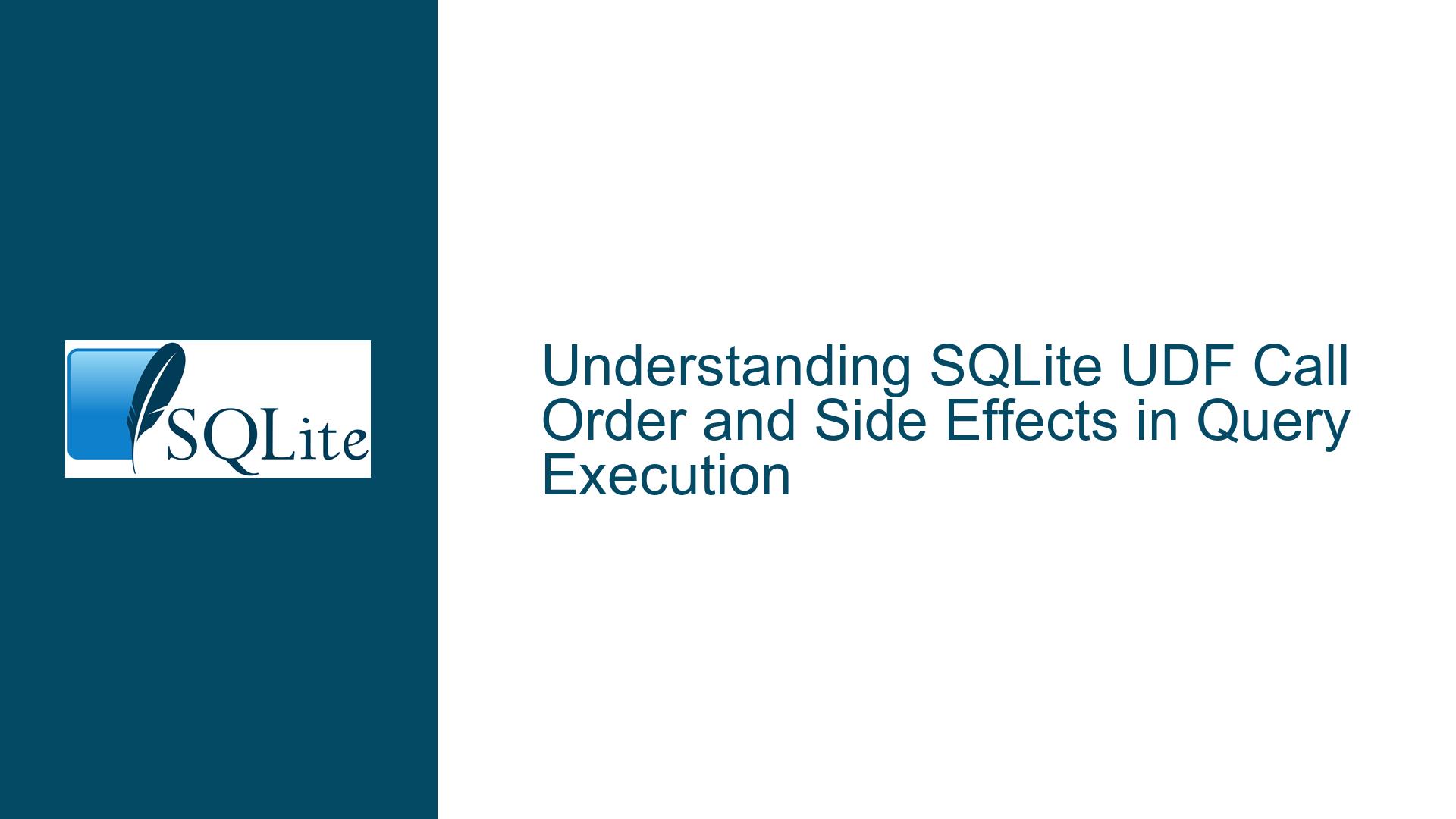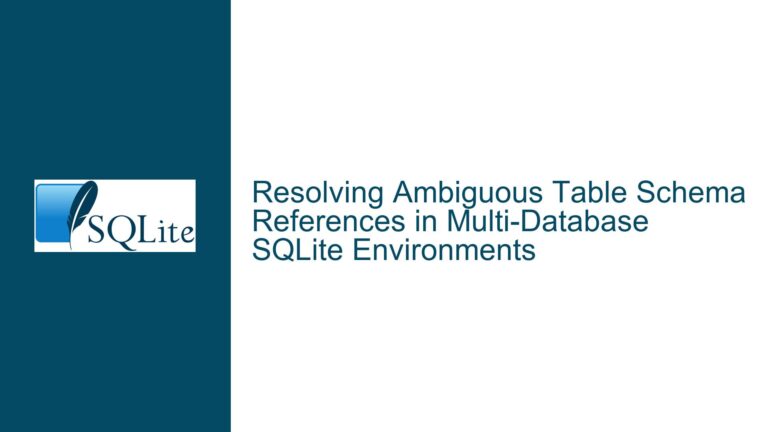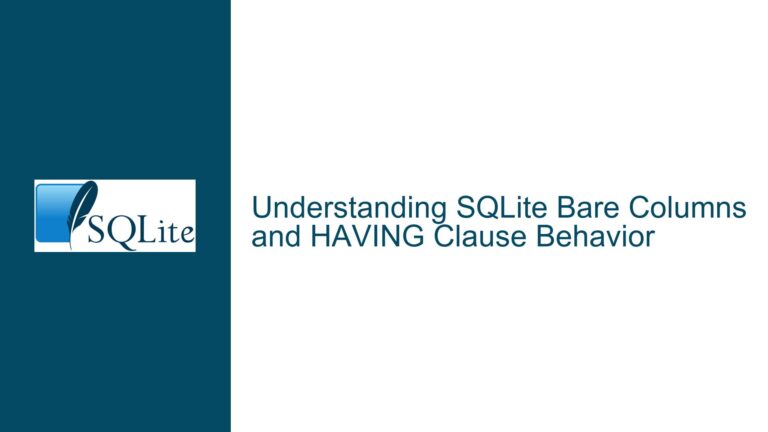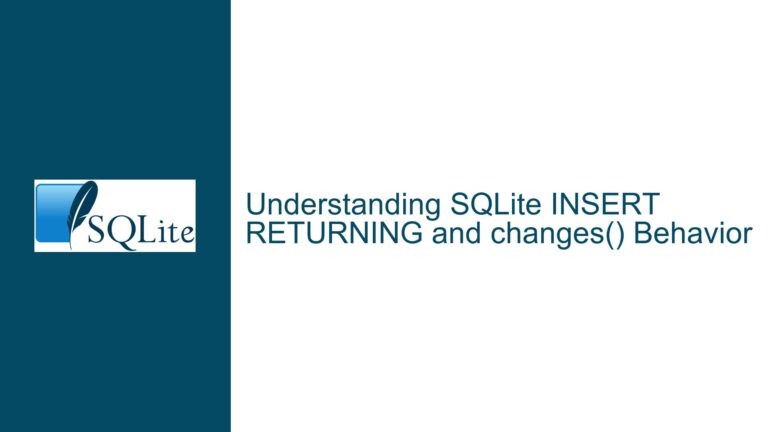SQLite UDF Call Order and Side Effects in Query Execution
SQLite UDF Call Order and Side Effects in Query Execution
When working with SQLite, particularly when implementing User-Defined Functions (UDFs), understanding the order in which these functions are called within a query is crucial. This becomes especially important when the UDFs rely on or modify external state, as the order of execution can directly impact the correctness of the results. The core issue here revolves around whether SQLite guarantees a left-to-right call order for UDFs within a single SQL statement. This is not just a theoretical concern but has practical implications for applications that depend on side effects or stateful operations within UDFs.
In the context of the provided discussion, the UDF fcard is designed to interact with an internal cursor that steps through rows of data. The function fcard(0) is intended to advance the cursor, while subsequent calls to fcard(1), fcard(2), etc., retrieve fields from the current row. For this to work correctly, fcard(0) must be executed before the other calls. However, SQLite does not provide any guarantees about the order in which UDFs are called within a single SQL statement. This lack of guarantee can lead to unpredictable behavior, especially when the UDFs have side effects or depend on external state.
The discussion also touches on the broader issue of whether UDFs should be used in this manner at all. UDFs are typically expected to be pure functions—that is, functions that do not have side effects and always return the same output for the same input. When UDFs are used to manipulate external state, as in this case, they blur the line between declarative SQL and procedural programming. This can lead to code that is difficult to understand, maintain, and debug.
Interrupted Write Operations Leading to Index Corruption
One of the key challenges in this scenario is ensuring that the UDFs are called in the correct order. Since SQLite does not guarantee the order of UDF calls, the application must find alternative ways to ensure that the internal cursor is advanced before the fields are retrieved. This is particularly important because the UDFs are not marked as SQLITE_DETERMINISTIC, meaning that SQLite is free to optimize or reorder the calls as it sees fit.
The lack of a guaranteed call order can be attributed to several factors. First, SQLite’s query optimizer is designed to rearrange operations to improve performance. This optimization process can change the order in which expressions are evaluated, including UDF calls. Second, SQLite’s execution engine may evaluate expressions in a different order depending on the query plan that is generated. This means that even if the UDFs appear in a specific order in the SQL statement, there is no guarantee that they will be executed in that order.
Another factor to consider is the nature of the UDFs themselves. In this case, the UDFs are not pure functions; they have side effects that affect the internal cursor. This makes them inherently procedural, which goes against the declarative nature of SQL. When UDFs are used in this way, they introduce a level of complexity that can be difficult to manage, especially in a multi-threaded or concurrent environment.
Implementing PRAGMA journal_mode and Database Backup
Given the challenges outlined above, it is clear that relying on the order of UDF calls within a single SQL statement is not a robust solution. Instead, the application should consider alternative approaches that do not depend on the order of UDF calls. One such approach is to use a table-valued function (TVF) instead of a scalar UDF. A TVF returns a set of rows, which can be joined with other tables or used in a subquery. This approach eliminates the need to rely on the order of UDF calls, as the TVF can be designed to return the entire row of data in a single call.
To implement a TVF in SQLite, you would need to define a custom virtual table or use the sqlite3_create_module API to create a new module that implements the desired behavior. The TVF would then return a single row with all the fields that need to be retrieved. This approach not only simplifies the query but also makes it more declarative and easier to understand.
Another approach is to use a procedural solution outside of SQLite to manage the internal cursor and retrieve the data. This could involve using a scripting language like Python or a stored procedure in a more procedural database system. By moving the procedural logic outside of SQLite, you can ensure that the internal cursor is advanced in the correct order before retrieving the fields.
In addition to these approaches, it is important to consider the broader implications of using UDFs with side effects in SQLite. UDFs should generally be used for pure functions that do not modify external state. When UDFs are used in a procedural manner, they can introduce subtle bugs and make the code more difficult to maintain. Therefore, it is important to carefully consider whether a UDF is the right tool for the job or whether a different approach would be more appropriate.
Finally, it is worth noting that SQLite provides several mechanisms for managing transactions and ensuring data integrity. The PRAGMA journal_mode command can be used to control how SQLite handles transactions and recovers from crashes. By setting the journal mode to WAL (Write-Ahead Logging), you can improve performance and reduce the risk of data corruption in the event of a crash. Additionally, regular database backups should be performed to ensure that data can be recovered in the event of a failure.
In conclusion, while SQLite does not guarantee the order of UDF calls within a single SQL statement, there are several alternative approaches that can be used to achieve the desired behavior. By using table-valued functions, procedural solutions, or other techniques, you can ensure that your application behaves correctly without relying on the order of UDF calls. Additionally, it is important to consider the broader implications of using UDFs with side effects and to use SQLite’s transaction management features to ensure data integrity.






